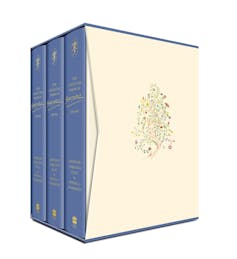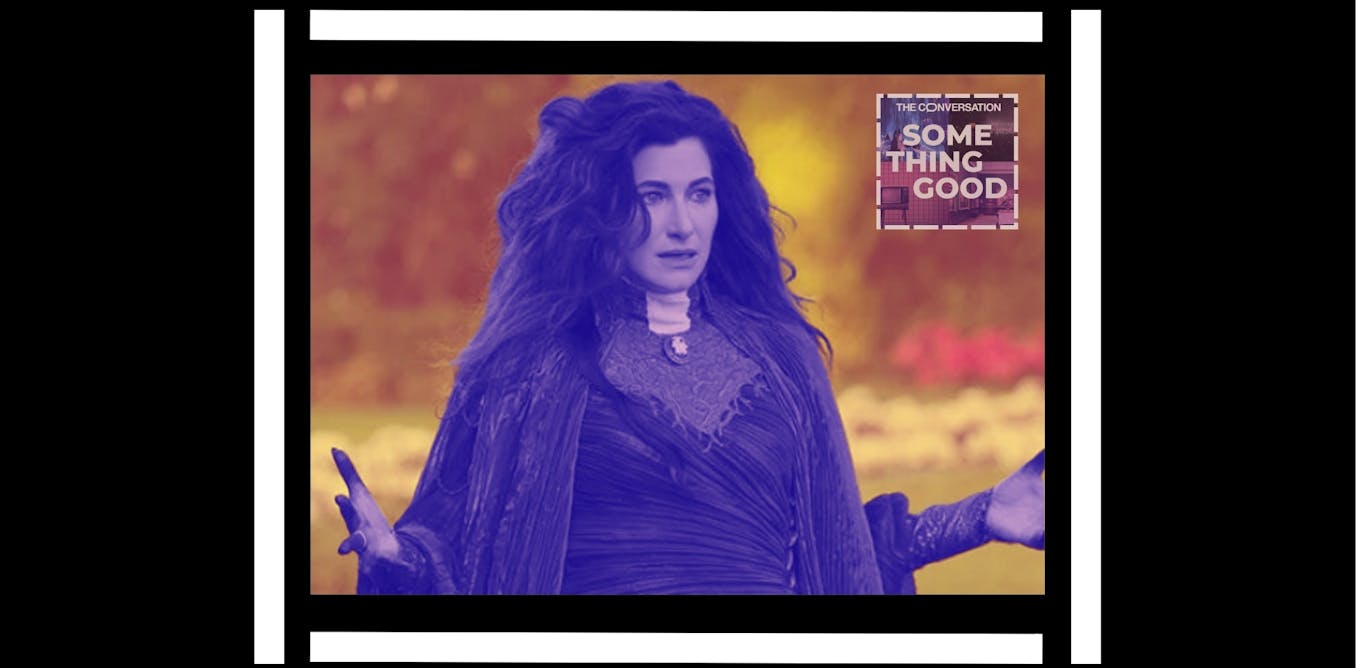This article was first published in our email newsletter Something Good, which every fortnight brings you a summary of the best things to watch, visit and read, as recommended and analysed by academic experts. Click here to receive the newsletter direct to your inbox.
There’s a deeply affecting episode of Dr Who set in late 19th-century rural France that sees the good doctor take Vincent van Gogh in his time-travelling Tardis to the present-day Musée d’Orsay in Paris so that the Dutch painter can see just how much his work is loved and revered in the 21st century. The artist sold just one painting in his lifetime.
In this perfect fantasy scene of redemption, as he walks through halls filled with crowds looking at his work, Vincent is undone, his face wet with tears. And that’s how I feel whenever I see a Van Gogh. For me, these extraordinary paintings are a bittersweet opportunity to witness up close the shimmering colours and thick impasto brushstrokes that convey that swirling sense of movement in his preternatural scenes of earth, wind and sky. Though they bring joy, they are tinged with sadness knowing that at his end, Vincent van Gogh would never understand what he had bestowed on the world.
If you see one exhibition this year, make it Van Gogh: Poets and Lovers at the National Gallery in London. Incredibly, as our reviewer and art expert Frances Fowle points out, this is the gallery’s first show dedicated entirely to the painter. Six rooms contain work from his final two years when he lived in Arles, Provence, the second of which was spent at an asylum in St Remy. Despite his illness, this was a hugely creative period. The dazzling natural landscapes of Provence stimulated something profound in Van Gogh, who saw great poetry in the wild rocky hillsides and silver-green olive groves.
In using quotes from his letters, the exhibition also reveals the highly poetic writer in Van Gogh, always striving to articulate his painterly vision and process. Above the peaceful Starry Night on the Rhone that shows two tiny figures beneath a swirling sky of yellow stars, he wishes “to express the love of two lovers through a marriage of two complementary colours, their mixture and their contrasts, the mysterious vibrations of adjacent tones”.
And this explains the sadness that Van Gogh often elicits in those who view his wonderful portrayals of nature and the human condition: his desire to connect to people with his painting was largely ignored. But there is also much comfort in his work. As he says in a letter to his brother Theo: “In a painting, I’d like to say something consoling, like a piece of music.”
Read more:
Van Gogh Poets & Lovers: poignant show of extraordinary work by Dutch painter at his most fragile
Dark women
Just in time for Halloween, a Marvel spin-off of a Marvel spin-off arrives in the form of Agatha All Along, a new nine-part series on Disney+. The brilliantly comic Kathryn Hahn extends her breakout character from 2021’s WandaVision in which she plays nosy neighbour Agnes. But Agnes is actually Agatha Harkness, a Salem witch trying to steal the magic powers of Wanda Maximoff. Hahn’s portrayal in the first spin-off actually nearly stole the show, and now she gets to shine in her very own series.
Agatha actually has a long and illustrious history in Marvel comics, where she first appeared back in 1969, created by Stan Lee and Jack Kirby. Academic Jack Fennell explains how Agatha came along at a difficult time, as the comics industry attempted to quell a moral panic about the perceived “immorality” of comics through a self-imposed content code.
This stipulated there could be no horror storylines – no vampires, werewolves or ghouls. But somehow witches were okay – possibly thanks to characters such as Glinda from the Wizard of Oz and Samantha from Bewitched. So witches were allowed as long as they were comedic rather than sinister or scary. Agatha became an ally to the likes of the Fantastic Four and the Avengers, and as Hahn aptly demonstrates in Agatha All Along, is a highly entertaining character.
Read more:
Agatha All Along: the Marvel comics witch who broke societal barriers and left superheroes powerless
The shadow side continues this week with French director Coralie Fargeat’s feminist body horror The Substance, which according to our reviewer Caroline Ruddell, features a ferocious comeback performance from 61-year-old Demi Moore. A violent and angry riposte to the limiting (and double) beauty standards women have always faced, the film opens with Moore’s character Elisabeth discovering her career is over as she is fired from her popular aerobics show the day she turns 50.
So, understandably, when she is offered a substance that will produce a younger iteration of herself that can stride out into the world fresh, new and sexy, she grabs it. Borne out of Elisabeth’s spine on her bathroom floor, the nubile Sue (played by Margaret Qualley) appears full-bodied, pouting and perfect.
But of course, as with any Faustian pact, there is a price to pay. As things start to go wrong with the drug, the film descends into an unflinching and gloriously gory howl of rage formidably embodied by Moore. While some critics have claimed the film plays into the hands of the very sexism it is attempting to take down, this is a thrilling rollercoaster ride of a film with much to enjoy – not least, Moore’s powerhouse performance after years in the movie desert reserved for ageing female stars.
Read more:
The Substance: Demi Moore is ferocious in gloriously gory satire on Hollywood’s female ageism
Russia is not a place for the innocent to end up in court – around 99% of defendents end up convicted, many for political reasons, and human rights activists particularly have been dealt excessive sentences, often based on flimsy, trumped-up charges.
Anna Narinskaya’s play, The Last Word, now transferred to London from Berlin, is a moving and poignant examination of the brave women whom Russia’s courts have jailed for speaking out against the regime. Thanks to Putin’s iron fist – and ramped up by the war in Ukraine – the law has become weaponised in an effort to promote the conservative views engendered by the church, nationalism and the dictatorial authority of the president himself.
Ute Langkafel/MAIFOTO
Reviewer Julie Curtis explains that surprisingly in a country where dissent is not tolerated, the Russian courts allows all defendants to make a final statement before the judge hands down a sentence. From the outspoken members of feminist band Pussy Riot to the poet Natalya Gorbanevskaya, who stood up against the Soviet invasion of Czechoslovakia in 1968, Narinskaya takes the words spoken by nine women at the end of their trials and turns them into monologues spoken by one actress to devastating effect.
This is a chance for these women to say their piece and express their sadness and anger at the state of their beloved country and its justice system. At the end of the play a role of the names of 85 women recently jailed unscrolls behind the stage. Powerful stuff.
Read more:
The Last Word: ‘painfully poignant’ play gives a voice to women silenced by Russia’s legal system

Harper Collins
Forgotten poetry
Long before he invented the expansive fantasy world of The Lord of the Rings, J.R.R. Tolkien’s ambitions leaned towards poetry. He wrote hundreds of poems throughout his lifetime, a prolific output that has been mostly overshadowed by his prose. That oversight has now been addressed in a huge three-volume collection of 250 works from across five decades, almost a quarter of which are previously unpublished.
In his review The Collected Poems of J.R.R. Tolkien, Tom Emanuel reveals that Tolkien would often return to the same poem reworking it over and over – as he did with The Sea-Bell, which he wrote in 1934. Telling a tale of a young man who visits an enchanted realm only to be left desolate when he returns home, the poem highlights an enduring theme in the writer’s work. This is often read as the effect fighting in world war one had on the young Tolkien and how it led to his desire to create re-enchantment in his literary output, where evil would not prevail.
That’s it from us this week, let us know if you end up watching, visiting or reading any of our recommendations.

Looking for something good? Cut through the noise with a carefully curated selection of the latest releases, live events and exhibitions, straight to your inbox every fortnight, on Fridays. Sign up here.

The post “The great poetry in Van Gogh’s work and a bewitching antihero – what you should watch and do this week” by Jane Wright, Commissioning Editor, Arts & Culture, The Conversation UK was published on 09/20/2024 by theconversation.com



































Leave a Reply